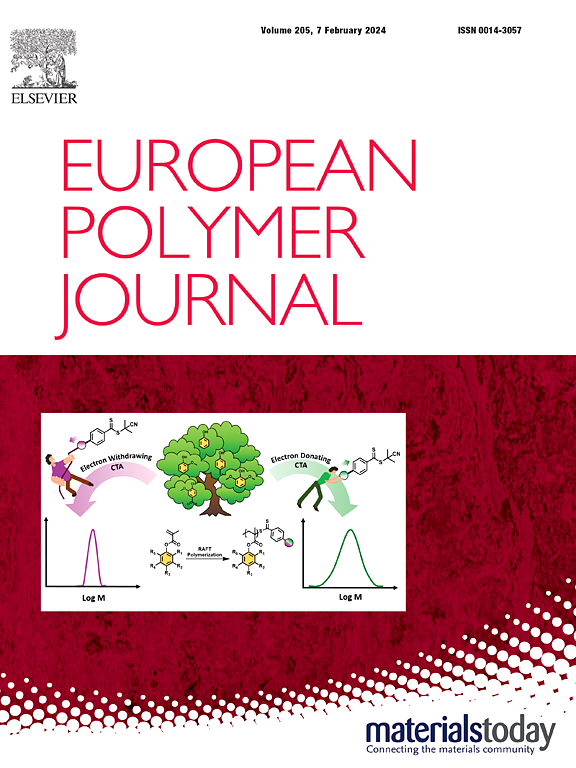Effects of side-chain flexibility on properties of azatriphenylene discotic liquid-crystalline ionomers
IF 5.8
2区 化学
Q1 POLYMER SCIENCE
引用次数: 0
Abstract
To investigate the influence of side-chain flexibility on the properties of discotic liquid-crystalline ionomers (DLCIs), a series of side-chain azatriphenylene ionic copolymers, denoted as C-PTPNm-X (where X = Br− or TFSI− and m = 3, 5, 7, 15), were synthesised via ring-opening metathesis polymerisation. These copolymers comprise a polycyclooctene backbone connected to discotic mesogenic units via flexible spacers of different lengths. Monomers and ionomers containing bis(trifluoromethanesulfonyl)imide ions (TFSI−) displayed columnar liquid-crystalline phases, whereas those with bromide anions exhibited non-mesogenic properties. Both the monomers and copolymers emitted yellow fluorescence with wavelengths ranging from 515 to 561 nm in both the solution and film states. Notably, replacing bromide anions with TFSI− significantly enhanced the absolute quantum yield in both monomers and copolymers. Additionally, the mechanical properties of the ionomers were dependent on the spacer length, with the stress and Young’s modulus of C-PTPNm-TFSI being approximately 30 times lower than those of H-PCOE, a cycloolefin homopolymer, thereby facilitating solution spinning. All the DLCIs demonstrated rapid thermal responsiveness and excellent shape memory characteristics. Flexible spacers in ionic monomers and copolymers enhance their thermal stability and mechanical properties while also influencing their clearing points and mesogenic temperature ranges. The type of anion significantly improved the thermal stability and affected the luminescence properties, whereas the spacer length had less impact on these attributes. The ionic conductivity of the DLCIs was strongly temperature-dependent and only slightly affected by the spacer chain length.

求助全文
约1分钟内获得全文
求助全文
来源期刊

European Polymer Journal
化学-高分子科学
CiteScore
9.90
自引率
10.00%
发文量
691
审稿时长
23 days
期刊介绍:
European Polymer Journal is dedicated to publishing work on fundamental and applied polymer chemistry and macromolecular materials. The journal covers all aspects of polymer synthesis, including polymerization mechanisms and chemical functional transformations, with a focus on novel polymers and the relationships between molecular structure and polymer properties. In addition, we welcome submissions on bio-based or renewable polymers, stimuli-responsive systems and polymer bio-hybrids. European Polymer Journal also publishes research on the biomedical application of polymers, including drug delivery and regenerative medicine. The main scope is covered but not limited to the following core research areas:
Polymer synthesis and functionalization
• Novel synthetic routes for polymerization, functional modification, controlled/living polymerization and precision polymers.
Stimuli-responsive polymers
• Including shape memory and self-healing polymers.
Supramolecular polymers and self-assembly
• Molecular recognition and higher order polymer structures.
Renewable and sustainable polymers
• Bio-based, biodegradable and anti-microbial polymers and polymeric bio-nanocomposites.
Polymers at interfaces and surfaces
• Chemistry and engineering of surfaces with biological relevance, including patterning, antifouling polymers and polymers for membrane applications.
Biomedical applications and nanomedicine
• Polymers for regenerative medicine, drug delivery molecular release and gene therapy
The scope of European Polymer Journal no longer includes Polymer Physics.
 求助内容:
求助内容: 应助结果提醒方式:
应助结果提醒方式:


